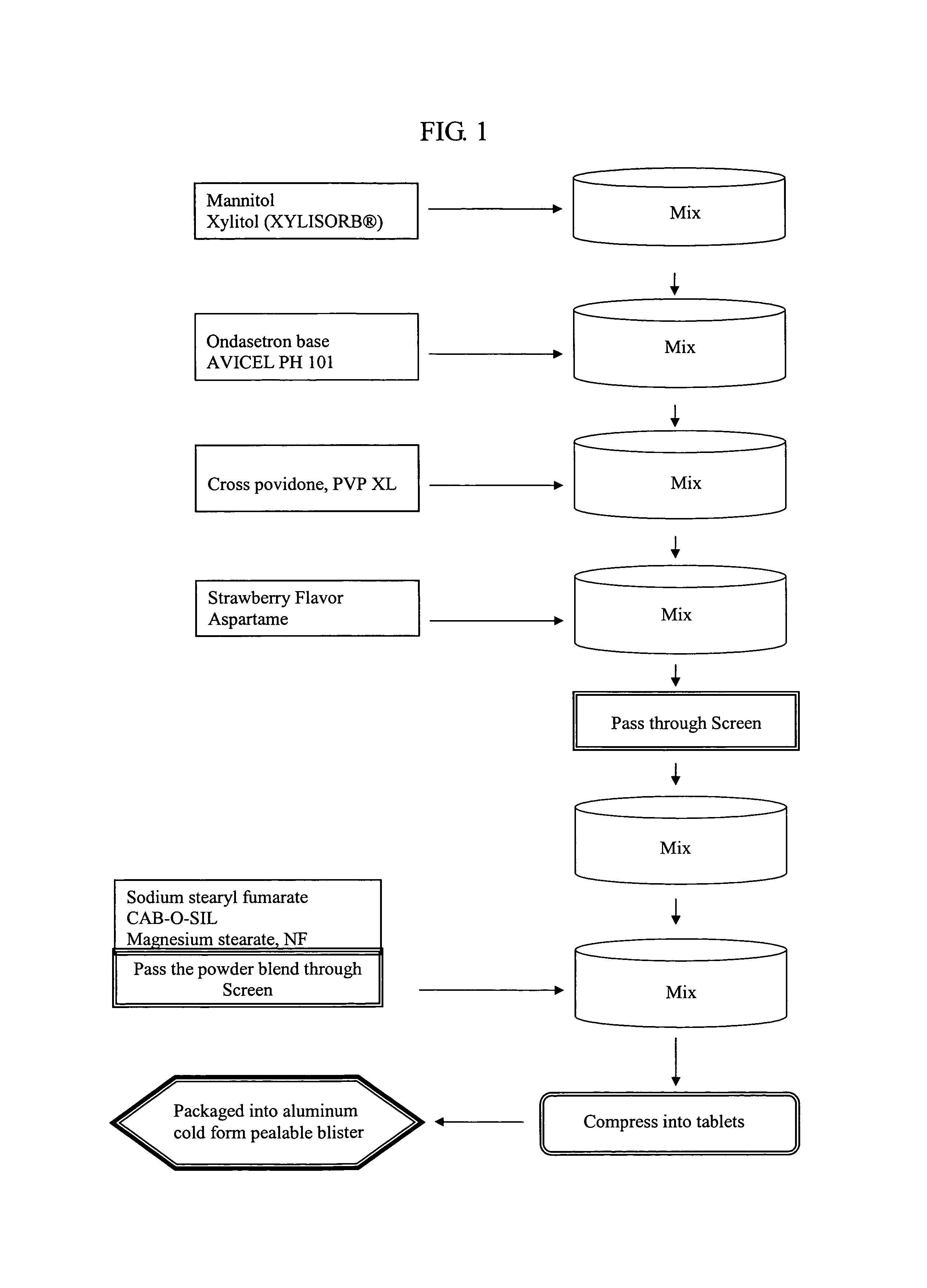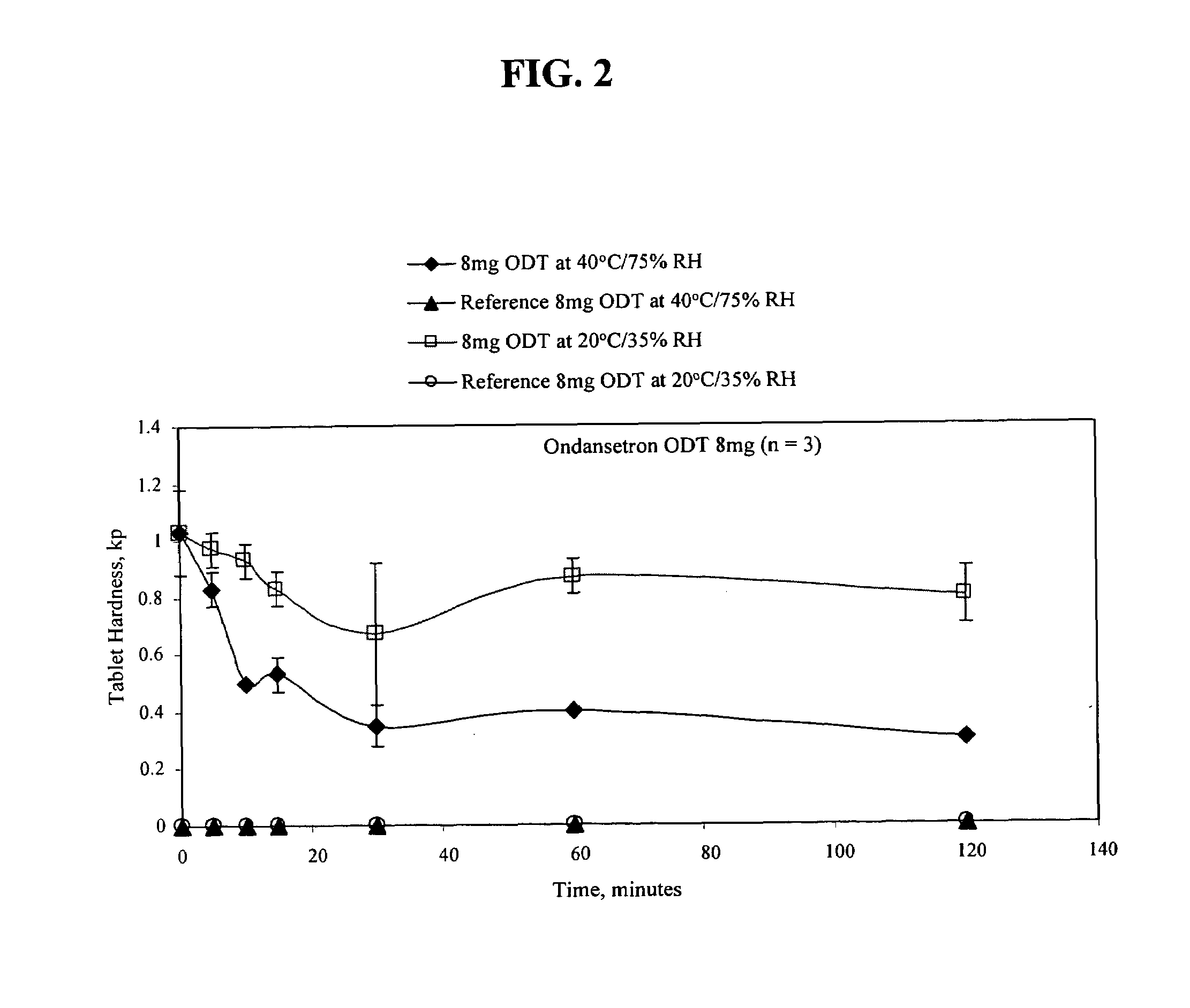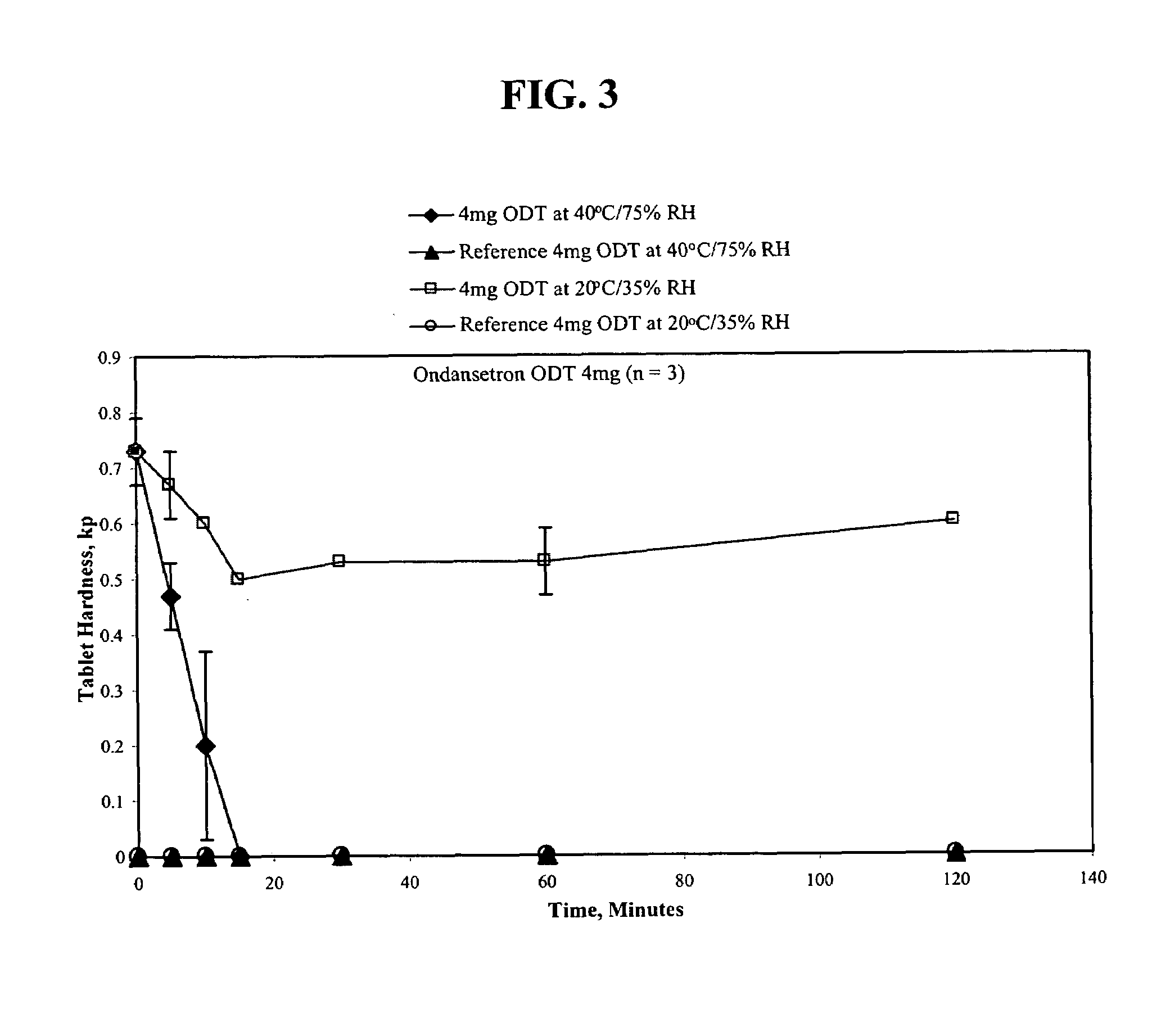Ondansetron orally disintegrating tablets
a technology of ondansetron and tablets, which is applied in the direction of capsule delivery, microcapsules, pharmaceutical delivery mechanisms, etc., can solve the problems of inconvenient use, unsuitable dosage forms, and significant problems in production, storage, transportation and consumer use, and achieves good scalability and reproducibility of tablets, reduces the effect of sensitive to moistur
- Summary
- Abstract
- Description
- Claims
- Application Information
AI Technical Summary
Benefits of technology
Problems solved by technology
Method used
Image
Examples
example 1
[0129]FIG. 1 is a flow chart describing the process for making an ondansetron formulation of the invention. Mannitol and xylitol were combined in a 3 cubic foot V-blender for five minutes with the intensifier bar on. The mixture was then milled through a FITZMILL fitted with a 1522-033 screen and a hammer forward. The mixture is then combined with ondansetron base and AVICEL PH 101 (FMC BioPolymer, Philadelphia, Pa.) and mixed again in the V-blender with the intensifier bar on. After 15 minutes, crospovidone is added and the mixture is blended for another 15 minutes with the intensifier bar off. Aspartame and strawberry flavor is then added to the mixture and mixed for 15 minutes with the intensifier bar off. The mixture is then screened through #20 mesh RUSSELL FINEX (Russel Finex Inc., Pineville, N.C.) screen and then blended for another 6 minutes with the intensifier bar off. Sodium stearyl fumarate, CAB-O-SIL (Cabot Corp., Billerica, Mass.) and magnesium stearate is subsequently...
example 2
[0130]The procedure of Example 1 was used to make the following 4 mgODT:
[0131]
TABLE 24 mg ODT formulationIngredientMilligrams / TabletOndansetron 4 mgXylitol4.25 mg Microcrystalline Cellulose2.5 mgColloidal Silicon Dioxide, NF0.75(CAB-O-SIL)Aspartame, USP (NUTRASWEET2.0 mgPowder)Natural & Strawberry Flavor Powder0.5 mgMannitol USP (PARTECK M 200) 30 mgCrospovidone, NF (POLYPLASDONE XL) 15 mgMagnesium Stearate, NF0.5 mgSodium Stearyl Fumarate, NF0.5 mgNet Tablet weight 60 mg
example 3
[0132]The procedure of Example 1 was also used to make the following 8 mg ODT:
[0133]
TABLE 38 mg ODT formulationIngredientMilligrams / TabletOndansetron 8 mgXylitol8.5 mgMicrocrystalline Cellulose5.0 mgColloidal Silicon Dioxide, NF1.5(CAB-O-SIL)Aspartame, USP (NUTRASWEET4.0 mgPowder)Natural & Strawberry Flavor Powder1.0 mgMannitol USP (PARTECK M 200) 60 mgCrospovidone, NF (POLYPLASDONE XL) 30 mgMagnesium Stearate, NF1.0 mgSodium Stearyl Fumarate, NF1.0 mgNet Tablet weight120 mg
PUM
| Property | Measurement | Unit |
|---|---|---|
| time | aaaaa | aaaaa |
| time | aaaaa | aaaaa |
| net weight | aaaaa | aaaaa |
Abstract
Description
Claims
Application Information
 Login to View More
Login to View More - R&D
- Intellectual Property
- Life Sciences
- Materials
- Tech Scout
- Unparalleled Data Quality
- Higher Quality Content
- 60% Fewer Hallucinations
Browse by: Latest US Patents, China's latest patents, Technical Efficacy Thesaurus, Application Domain, Technology Topic, Popular Technical Reports.
© 2025 PatSnap. All rights reserved.Legal|Privacy policy|Modern Slavery Act Transparency Statement|Sitemap|About US| Contact US: help@patsnap.com



